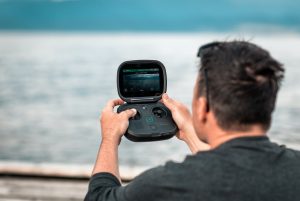Underwater innovation: Transforming aquaculture with robotic technologies

Underwater innovation has emerged as a key component in the evolution of aquaculture, transforming how facilities are managed and operated in challenging marine environments. From exploring the depths to continuous monitoring, robotics is playing a vital role in improving the efficiency and sustainability of open-sea aquaculture operations. In this article, we will explore the characterization of robotics used in open-sea farming, along with examples of leading technologies providing robotic solutions for aquaculture.
Characterization of robotics in open-sea farming
1. Submarine drones: Explorers of depths
2. Continuous monitoring robots: Guardians of crop health
3. Robotic arms for specific tasks
4. Intelligent sensors and imaging technology
5. ROV DTG3 by Deep Trekker
Human training in the use of robotic technologies
The successful integration of robotics in aquaculture depends not only on the technology itself but also on the knowledge and skills of those who use it. Training workers in the use and maintenance of these technologies is crucial to maximize their effectiveness and ensure smooth operations.
1. Role of training:
Training plays a crucial role in several aspects:
2. Challenges of training:
Despite its importance, training presents challenges, such as:
Investing in human training not only overcomes challenges but also ensures the full realization of the benefits of robotics in aquaculture. As technology advances, it is crucial that the workforce evolves alongside it, ensuring a sustainable and efficient future for the aquaculture industry.
The future outlook of robotics in aquaculture focuses on continuous improvement in the autonomy and navigation capabilities of robots, as well as integration with artificial intelligence systems for even more sophisticated monitoring and predictive decision-making.
In summary, the robotization of open-sea farming not only represents technological advancement but also a significant step toward a more efficient, sustainable, and adaptable aquaculture industry. With proper human training, the collaboration between humans and robots promises to transform marine food production on an unprecedented scale.
This article is presented by Aquanetwork, your reliable source for job opportunities in the aquaculture industry. Connect with employers and passionate professionals at Aquanetwork.